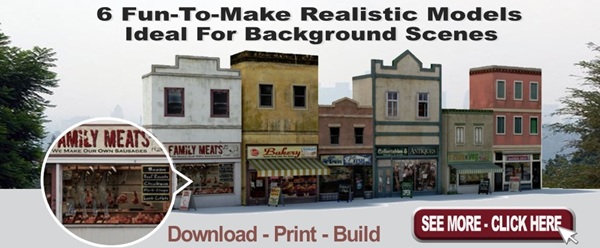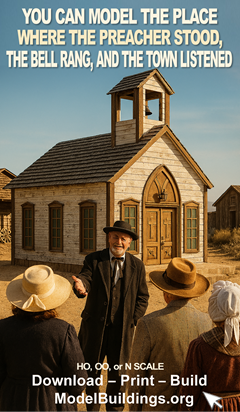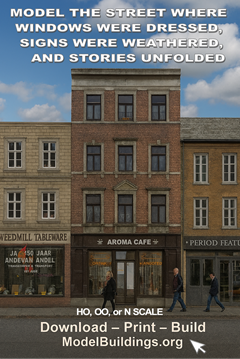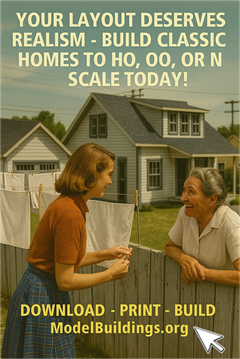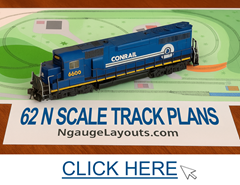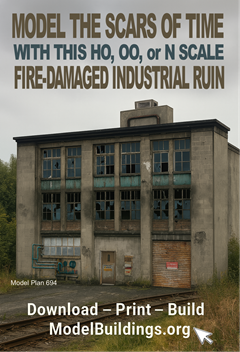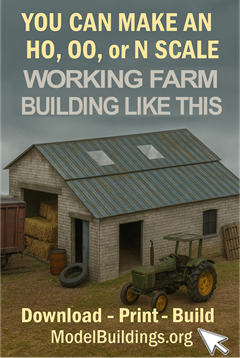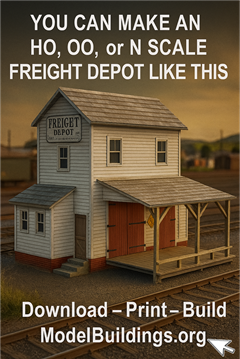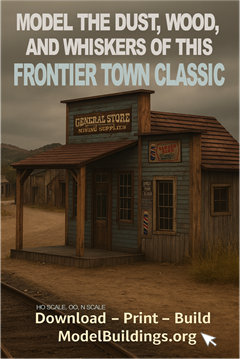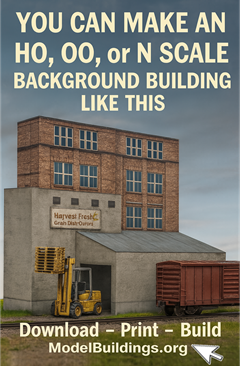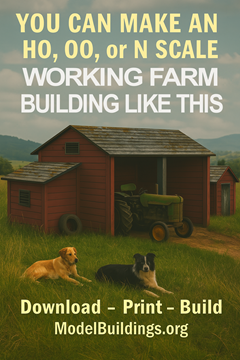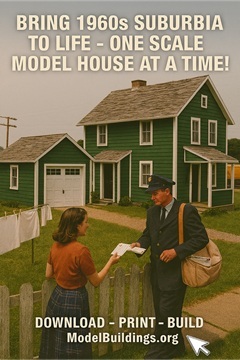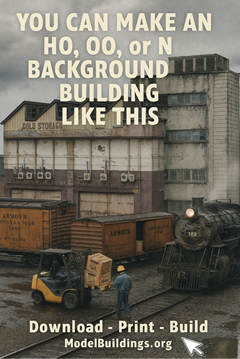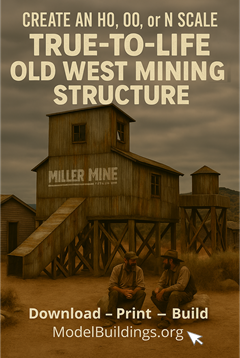Everything on model trains, model railroads, model railways, locomotives, model train layouts, scenery, wiring, DCC and more. Enjoy the world's best hobby... model railroading!
Conversion To RC
Ben asks readers:
“I want to convert my O scale locos to RC. What am I up against? I have a G scale that loco was just converted.”
You are welcome to submit your thoughts below.
Loco Stopping and Starting at Slow Speeds
Rex models HO and writes:
“I just put a new Walthers Mainline F7B unit with a Sound Value Diesel Walthers Mainline Decoder on the track. It works fine going forward. In reverse at slow speeds, it will lose power (no sound) and stop but, in most cases, immediately start up again. This can happen 2 or 3 times while moving 12 inches. It does not stop while running at mid-range speeds and higher. Nothing changed after cleaning the track. I tried jiggling the wires but could not find a cause and effect. Usually, I don’t have time to reach the engine. Any ideas?”
Peter Reveals New Extension To His Old Layout
Regular contributor Peter Field from South Africa shares these photos and writes –
In October/November 2021, I noticed that the original board on my layout was starting to warp due to its age being +-25years old. A decision was made to replace the old board with a new one and duly stripped off all buildings and track work from the original board and stored everything in boxes.
I duly bought a new board (shutter board) which was 244 x 200cm and had it cut to 2.0 x 2.0m which was mounted diagonally to the existing boards and was duly mounted to the steel frame once that was done I was ready to start the rebuild of the board.

First I measured the size of the town on the board and then marked out the roads and then replaced the buildings as I had planned on the board. As each building went up I duly electrified each building.
Last but not least I started to lay down the trackwork and the points. Once everything was completed, I checked the layout for problems concerning the operation of the trains to make sure they ran smoothly. This new layout took me 2 months to build and assemble and electrify.
As previously mentioned this layout represents the South African railways in the early 1960s to the late 2000s when steam diesel and electric all worked in tandem with each other.
These three photographs show the layout under construction and as it is now.
If you have a photo or story to share with readers, you can make contact with the Blog Moderator by sending details using the Ask A Question link below.
Toxicity of Model Making Paints and Products
Murph writes:
“I am a 70 yr old man who has multiple health issues including COPD, Lupas. I have a real desire to model a portion of the LTV Steel mill in Cleveland, Ohio, where I worked for 40+ years. Two problems. I haven’t modeled anything since I was 15. I bought a small paint booth and plan on other precautions but would like comments from those who have already used model-making products, adhesives, and paints.”
Obviously, Murph will need to make his own decisions based on his personal medical condition and circumstances, but readers might like to add details from their own experiences below.
Layout Height
Paul asks:
“My HO layout is 44 inches high. People have to bend over to look at buildings etc. I’m currently raising it another 4 inches. I’m wondering what height do most of you use on your layouts?”
Add (or view) answers below.
6 Axle Locomotives Operating with Long Cars
Michael writes:
“I plan for a 6 x 4 Bachmann EZ track setup and want to operate 6 axle locos with longer cars. Would 22” curves suffice, or would I need 24”? What’s the view?”
Power Problems With Atlas Crossing
Ian writes:
“I have a bit of a power problem with my Atlas 45 degree crossing. I have soldered the connections also with the addition of a power supply for each rail in the middle of the crossing. Despite this, my engines stall at the crossing. Is there a fix?”
Weights of Cars and Position in Consist
Janelle is working with her hubby on their new HO layout and asks:
“I gather real railroad trains run with a mix of fully loaded tankers and cars and lighter empty flatcars without adverse results like derailing? My guess also is that running lighter-weight cars would be more at risk of causing a derailment than heavy cars. If my assumption is correct, how then will this apply to trains on our new model railroad, and what would be the ideal weights and position for cars behind the locomotive? Any sharing of knowledge would be greatly appreciated.”
Peco Insulfrog Turnouts
Jeff asks:
“I want to make my turnouts as problem free as a can, sop was wondering if I should add additional jumpers on my Peco insulfrog turnouts? My locos are both new.”
Type your suggestions below.
Realistic Scale Model Tree Sizes
Kevin asks:
“Last time I visited a train show I remember thinking some of the trees looked too big in proportion to the train size. I mentioned it to a friend who said it was most probably because I was looking down on the layout so they appeared bigger.
I want a few trees for my 2ft x 10ft switching layout and I am thinking that full-grown trees could overwhelm the scene. What size trees would you recommend in HO scale – how tall?”
Share your answers and read suggestions from others in the hobby below.
Rivarossi 2-8-4 Pulling 20 Cars On Loop
Yves asks:
“I have a basic 4ft x 8ft HO layout and spotted a near new Rivarossi 2-8-4 advertised for sale. My experience with steamers is zero. It would need to pull up to 20 cars around a loop if possible?”
You are welcome to contribute your thoughts below (and see what others have to say).
How to Deal With Reverse Loop in DCC?
Dealing with the problem of reverse loops in DCC systems is much more straightforward and easy as compared to traditional DC systems.
In DC systems, an additional switch is needed to manually operate the reverse loop, while in DCC layout the entire mechanism is automated. The layout just requires the addition of a reversing module in the system and it will automatically detect the reverse loop and switch the power between the tracks.
So, you just need to get a reversing module that is compatible with the power requirement of your layout and the job is done!
Train Going Opposite Direction
Irene asks:
“I have an HO lifelike steam engine with tender car 0-4-0. It wants to run in the opposite direction than what I have the resistor on, in other words, it runs backward on forwards and vice versa. What can I do as it can get confusing at times?”
Comment below.
Scale Model Bridge and Wall Construction – Watch this step-by-step video demonstration
Plans available to down at https://www.modelbuildings.org/walls-tunnels-bridges/
Construct to OO, HO, or N scale.
DCC Controllers
Steve asks:
“I am currently running an MRC handheld controller on a small layout (10 x 10) in HO scale. I am moving my layout to another part of the basement and am going to expand it about three-time bigger. I was offered another MRC setup and was wondering if I can use this system as a separate running system, or should I if possible just use the handheld controller?”
Comments below.
